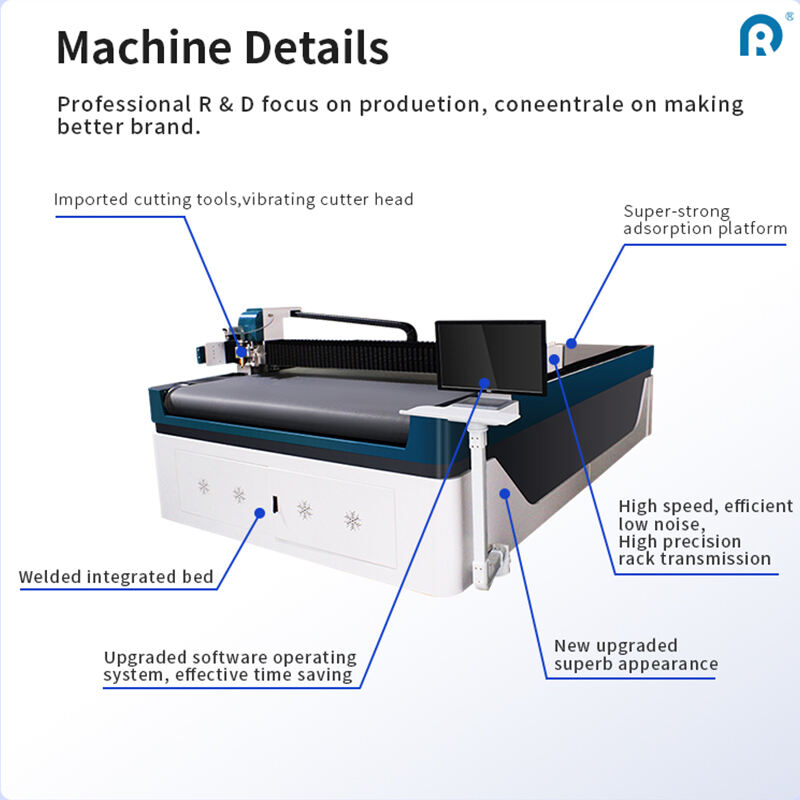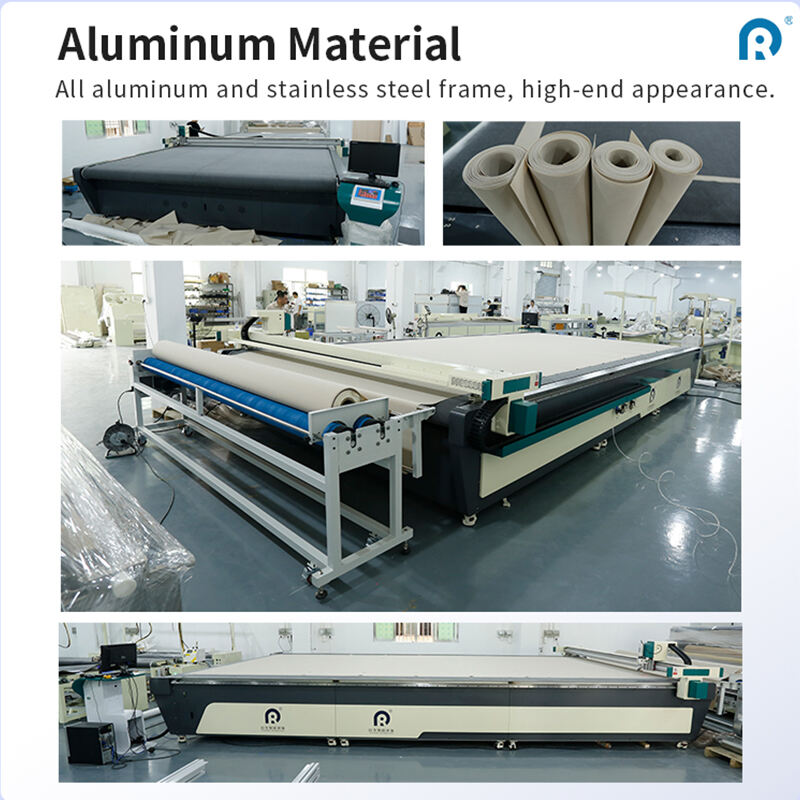Imagine your awning workshop. The hum of activity, the smell of fabric, the focus of your team. But in the corner, there’s a constant challenge: the cutting table. Manual measuring, the potential for human error, the sheer amount of time it takes to get a perfect cut every single time. A miscalculation doesn't just waste expensive fabric; it wastes time, your most valuable resource.
For decades, this was just the cost of doing business. Not anymore. The industry is undergoing a quiet revolution, and at the heart of it is a piece of technology that is reshaping profitability, precision, and potential: the Awnings Cutting Machine.
This isn't just about replacing scissors with a blade. It's about embracing a new era of smart manufacturing. If you're wondering whether this technology is a fleeting trend or the bedrock of your future business, you're asking the right question. Let's dive into the compelling development prospects of this pivotal equipment.
Why the Shift? The Pain Points of Traditional Awning Cutting
Before we look forward, let's acknowledge the present struggles that many shop owners face:
1. The High Cost of Human Error: A misplaced chalk line or a shaky hand with a knife on a $50-per-yard specialty fabric can erase the profit margin of an entire job.
2. Inconsistent Results: Even your best employee can have an off day. Manual cutting leads to variations, making it difficult to guarantee that every awning is identical, which can hurt your brand's reputation for quality.
3. The Speed Bottleneck: Measuring, marking, and cutting by hand is painfully slow. It limits your production capacity, meaning you might have to turn down large orders or face extended lead times that frustrate customers.
4. Material Waste: Manual pattern nesting—figuring out how to arrange pieces on fabric to minimize waste—is like a frustrating puzzle. Even experts leave valuable scraps on the cutting room floor.
5. The Physical Toll: Repetitive cutting motions can lead to strain and injury. It's also increasingly difficult to find skilled labor willing to do this manual, taxing work.
These aren't small inconveniences; they are direct drains on your bottom line and ceilings on your growth. This is precisely why automated awning fabrication equipment has moved from a "nice-to-have" to a "must-have" for forward-thinking businesses.
The Rise of the Machines: Key Technological Advancements
Modern awning cutting systems are marvels of engineering designed to solve the problems above. They are defined by several key features:
CNC Precision: Computer Numerical Control (CNC) is the brain of the operation. You upload a digital design file, and the machine executes the cuts with laser-like accuracy, down to a fraction of a millimeter. Every. Single. Time.
Advanced Software Integration: This is the real game-changer. The software does more than just direct the blade. It performs intelligent automatic nesting, calculating the most efficient layout for all your pieces to absolutely minimize fabric waste. Some systems can even scan a roll of fabric to avoid imperfections automatically.
Versatility in Cutting Tools: Depending on the model, these machines can use oscillating knives for thick materials like vinyl and acrylic, drag knives for precise curves on softer fabrics, and even routers for adding grommet holes or perforations. This versatile awning production tool handles a wide range of materials without needing retooling.
User-Friendly Operation: Don't imagine a complex, code-driven monstrosity. Modern interfaces are touch-screen and intuitive. Training an operator to run the machine effectively can often be done in a matter of days, not months.

The Future is Bright: Development Prospects and Industry Trends
The technology isn't standing still. The future development of awning manufacturing machinery is heading in some incredibly exciting directions:
1. Full Integration into the "Smart Factory": The standalone cutting machine is just the beginning. The future lies in it being a node in a fully connected network. Imagine: your CAD design is finished, sent to the cutting machine, which cuts the fabric perfectly. Then, automated conveyors move the cut pieces to the welding and sewing stations, all tracked via RFID tags. This end-to-end digital workflow eliminates bottlenecks entirely.
2. AI-Powered Predictive Nesting and Analytics: Future software won't just nest for a single order. It will use Artificial Intelligence to analyze your upcoming order queue for the week, combining jobs from different clients to optimize material usage across the entire production cycle. It will also provide predictive analytics on machine maintenance, alerting you to replace a blade before it fails, preventing costly downtime.
3. Increased Accessibility for Smaller Shops: As technology matures and more players enter the market, the cost of entry is decreasing. We are seeing the rise of more compact, affordable CNC awning machines designed specifically for small to medium-sized enterprises (SMEs). This democratization of technology means you don't need to be a industrial giant to benefit from automation.
4. Sustainability as a Core Feature: Reducing material waste isn't just good for profitability; it's a powerful marketing message and an ethical imperative. The next generation of machines will have sustainability metrics built into their software, showing you exactly how much material and money you've saved, a key point for environmentally conscious businesses and clients.
The Tangible ROI: More Than Just a Machine, It's a Business Partner
Investing in an industrial awning cutting solution isn't an expense; it's a strategic investment that pays for itself. Here’s how:
Slash Material Costs: Reduce waste by 10-20%. On expensive fabrics, the machine can pay for itself in material savings alone within a year.
Multiply Your Output: Increase your cutting speed by 5x to 8x. One machine can do the work of several employees, freeing them up for higher-value tasks like installation or sales.
Win More Business: With faster turnaround times, you can take on more work and promise quicker installs, making you more competitive against shops still cutting by hand.
Uncompromising Quality: Deliver flawless, consistent products that enhance your brand's reputation and allow you to command premium prices.
Scale with Ease: Handle large, complex orders (like for hotels or stadiums) that would be impossibly time-consuming and risky to do manually.
Is It Right For You? Making the Decision
The question is no longer if automation is the future, but when you will join it. If you're experiencing growth, struggling with consistency, or simply want to future-proof your business against rising costs and labor shortages, the answer is clear.
When considering an awnings cutting machine, focus on your specific needs: your primary materials, your average daily/weekly output, and your available space. Reputable manufacturers offer demonstrations and will often test your sample files to prove the machine's capability and potential savings.
Conclusion: Cutting the Path to Tomorrow
The development prospect for the awnings cutting machine is not just about sharper blades or faster motors. It's about intelligence, connectivity, and accessibility. It represents a fundamental shift from craft-based manual labor to tech-augmented manufacturing.
Embracing this technology isn't about replacing the human touch that is so vital to a successful awning business. It's about empowering your skilled team with the best tools available. It’s about focusing your human creativity on design, customer service, and growth, while letting a precision machine handle the repetitive, high-stakes task of cutting. It's about building a business that is more profitable, efficient, and ready for the future.
The future of awning manufacturing is precise, efficient, and automated. The cut is yours to make.

Q&A: Addressing Your Top Concerns on Awnings Cutting Machines
Q: I'm a small shop owner. Aren't these machines only for huge factories?
A: This is a very common concern! While large industrial models exist, the market has responded with a range of compact and affordable CNC cutting solutions specifically designed for SMEs. Many manufacturers offer financing options, and the ROI—through material savings and increased capacity—often means the machine pays for itself surprisingly quickly, making it accessible for growing businesses.
Q: My current team is not tech-savvy. How difficult is it to operate and learn?
A: Modern machines are built with the operator in mind. The software is typically graphical and intuitive, using touch screens and simple commands. Most suppliers include comprehensive on-site training. Many shop owners are surprised that their experienced floor staff, who understand fabric and patterns, often learn the software quickly because they immediately see the benefits. It's more about guiding the machine than programming it from scratch.
Q: I work with a variety of materials, from thin sunscreens to heavy vinyl. Can one machine handle it all?
A: Yes, versatility is a key feature. When researching, you'll want to look for a machine with a multi-tool setup. An oscillating knife is essential for heavy, dense materials, while a drag knife is perfect for precise cuts on lighter fabrics. Many systems allow for automatic tool changing within a single job, so you're covered for your entire product range.
Q: What about maintenance and downtime? I can't afford my production to stop.
A: Reliability is a top priority for manufacturers. These machines are built for industrial environments. Regular maintenance is simple (like blade changes and cleaning) and can be done by your staff. Reputable brands offer robust warranty programs and remote support. Often, a technician can diagnose an issue remotely, and if a part needs replacing, they can express ship it to you, minimizing any potential downtime.
Q: How does the software handle custom, one-off designs vs. repeating the same patterns?
A: The software excels at both. For custom designs, you simply import the unique DXF file from your CAD software, nest it on the virtual fabric (or let the software auto-nest it for efficiency), and send it to cut. For repeat orders, you save the job file. The next time you need it, you just open the file, tell it how many copies to cut, and press start. It ensures every replica is perfectly identical to the first.
Q: My main issue is material waste. How much can I really save?
A: This is where the most immediate financial gain is often seen. The advanced auto-nesting software is incredibly efficient at arranging patterns to utilize the maximum amount of fabric. Most businesses report a reduction in material waste of between 10% and 20%. On high-end materials, this saving alone can add up to thousands of dollars per month, directly impacting your profit margin.